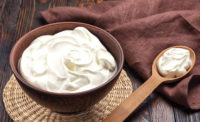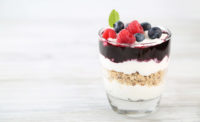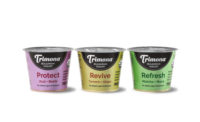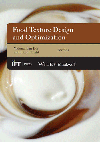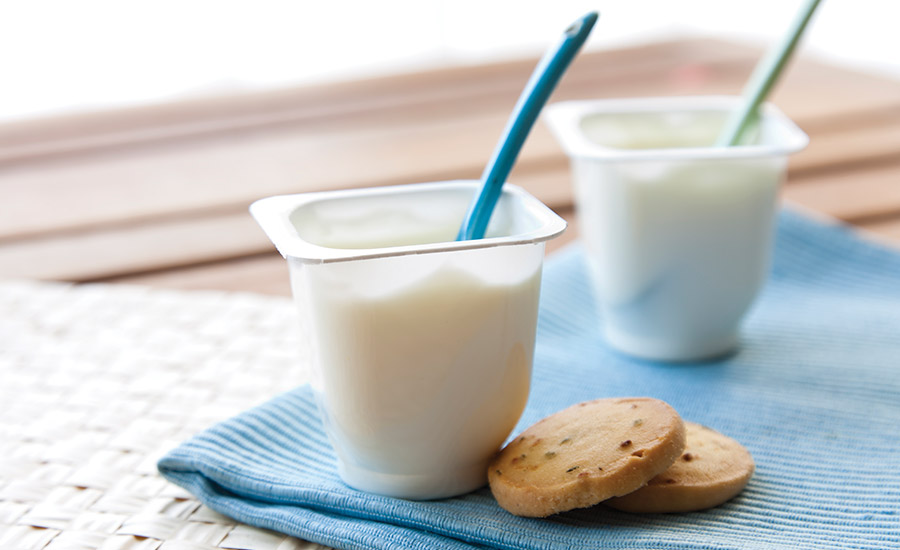New cultured dairy products are for every occasion
The fermented category breaks out of its mold with new flavors, international styles and health claims.










Cultured dairy is at a bit of a crossroads. The category, which includes products such as yogurt/skyr, sour cream, cottage cheese, cream cheese and kefir, is searching for its place within the many competing options for breakfasts, snacks, healthful meal replacements and more.
“Some consumers are eating less yogurt than previously as they explore other snack options,” said Alessandra Simkin, senior manager, external communications, Danone North America, which is based in White Plains, N.Y., and Broomfield, Colo. “On one end of the spectrum, they are looking for indulgence — salty snacks, cookies and frozen novelties are areas of growth that we believe are taking some of the yogurt consumption. And on the other end of the spectrum, [they’re looking for] nutrient-dense options.”
According to Joe Reske, senior director of marketing, DairyPure, which is part of Dallas-based Dean Foods, these numerous and increasing number of options means that consumers are faced with “thousands of decisions every day.”
He added that in addition to other products that compete with cultured dairy, “there has been a significant increase in innovation in the cultured food category in recent years — new flavors, alternative bases and completely new products, as well as numerous introductions of plant-based imitations, making it difficult for the consumers to decide what’s best for them and their family.”
Sales data confirm that cultured dairy is experiencing some troubles. Yogurt, the largest subset of the category, saw a 3.5% drop in dollar sales over the 52 weeks ending Jan. 27, 2019, according to data from Chicago-based market research firm IRI. In fact, since Greek yogurt reached its peak in 2015, yogurt has declined year over year, according to “Yogurt and Yogurt Drinks US,” an October 2018 report from global market research firm Mintel.
And yet, like with Greek yogurt’s popular entry into the dairy aisle over 10 years ago, cultured dairy companies are innovating new life into the category. Mintel said cultured dairy’s greatest opportunity is integrating itself into more eating occasions, from snack time to an indulgent dessert to an ingredient in other recipes.
The marketing team at Darigold Inc., Seattle, concurred.
“The cultured dairy category is headed toward expanded usage occasions, and dairy processors need to help make it easy for consumers to add cultured foods to their weekly shopping baskets,” they said.
Going global
It’s not all Greek to consumers anymore. As American eaters show interest in more unique flavors, many are gravitating to other international styles of cultured dairy.
According to “U.S. Food Market Outlook Report, 2019” from Packaged Facts, a division of Rockville, Md.-based MarketResearch.com, “Yogurt variations hitching their wagons to the ‘international version’ principle of Greek yogurt are another important category development theme.”
One relative newcomer on the scene is Icelandic-style cultured dairy, or skyr, which is similar to yogurt.
“Sales of Icelandic yogurt are up as health-conscious consumers look for yogurts that offer the most protein and least sugar,” said Mintel. “Icelandic yogurt is likely already stealing market share away from Greek yogurt brands.”
Elliot Shifrin, vice president of marketing for New York-based Icelandic Provisions, noted that consumer desire for heritage foods with a story and full-fat cultured dairy has increased interest in skyr. The company recently released a whole-milk version called Krímí, which combines whole milk with 7% milkfat with heirloom skyr cultures. The new line comes in four flavors: Vanilla Bean, Strawberry-Rhubarb, Mixed Berry and Chocolate Coconut.
“It’s a uniquely delicious product that delivers an incredible eating experience while being naturally good for you with a ton of protein and not too much sugar,” he said.
Another recent international release is Wallaby Aussie Crème Yogurts from Danone North America. The Australian-style yogurt is crafted to be an indulgent experience by using 8.5% milkfat yogurt infused with a dulce de leche flavor. It is available in three varieties: Spiced Peach, Strawberry Red Wine and Caramelized Pineapple.
Cacique Inc., a Monrovia, Calif.-based company that offers products under the Cacique Hispanic brand, has also capitalized on consumers’ growing willingness to try new things.
“Recently, we’ve seen younger consumers take a more adventurous approach to cooking and appreciate the authenticity of our products as they explore foods from various cultures,” said Gil de Cardenas, CEO, Cacique.
In 2017, Cacique launched Mexican-style flavored sour creams that are infused with “authentic” flavors and are packaged in a squeezable bottle. The products come in Spicy Jalapeño, Chipotle and Cilantro Lime flavors.
According to de Cardenas, today’s consumers have a genuine desire to learn how to cook with products from other cultures.
“They’re … seeking to better understand the foods that they choose to enjoy,” he noted. “At Cacique, we’re investing in programs that better educate consumers on our products and how to cook with them.”
Marketing nutrition
With the growing number of health-conscious consumers, many parts of the food and beverage industry are trying to market the nutritious qualities of their products. This is an area where cultured dairy has a distinct advantage, as many eaters already believe that the probiotics associated with some fermented products are healthy.
“A healthy lifestyle is a major driving force behind yogurt consumption, with consumers today increasingly well-informed about the impact that food can have on their health and wellbeing,” said Kees Muijlwijk, global application manager for dairy, DSM Food Specialties, Waukesha, Wis.
As consumers search for the healthiest option, dairy processors need to be proactive in showcasing what makes their products nutritious.
“[DairyPure] — among other dairy processors — is working to more prominently identify key nutritional benefits on packages, like higher protein, to respond clearly to consumer demand for more transparency into what their foods are made of and help them navigate through the dairy aisles,” said Reske. “We’re also seeing products serve more than just one need and provide numerous nutritional benefits.”
Danone North America released Activia Probiotic Dailies with prebiotic fiber and real ginger to play to the wellness market. The yogurt-based drinks, which come in Lemon Ginger and Honey Ginger flavors, advertise the health benefits of both prebiotics and probiotics.
The company is also capitalizing on another health trend: eating less sugar. Its Two Good Greek low-fat yogurt relies on a patent-pending slow-straining process to remove most of the sugar from the milk going into yogurt production, Simkin said.
“Sugar is a major concern for many consumers, and an area of opportunity for innovation in the category,” she added.
Two Good has 85% less sugar that average yogurts, with just 2 grams per 5.3-ounce serving. The yogurt is packaged in single-serve cups in Blueberry, Strawberry, Vanilla, Peach and Mixed Berry flavors.
Yoplait, a brand of Minneapolis-based General Mills Inc., is also expanding into the low-sugar market.
“Our recent new product launch, YQ by Yoplait, features more protein and less sugar, tapping into two of the biggest category trends,” said Doug Martin, vice president of marketing for Yoplait. “The product will relaunch in June with an improved taste profile.”
Fitness-focused foods with high levels of protein are another area of growth in cultured dairy. Lifeway Foods Inc., Morton Grove, Ill., launched its TruEnergy fueled by Lifeway drink in response to this trend.
“Like most categories, consumers are very focused on protein right now — of which cultured dairy is a great source,” said Derek Miller, vice president of communications, Lifeway Foods.
Launched through a collaboration with TruFusion fitness studios, the drink is an 8-ounce vanilla-flavored kefir smoothie with 21 grams of protein and 12 live and active probiotic cultures.
“People are getting more acquainted with the nutritional support provided by cultured dairy that they don’t associate with more traditional dairy products such as fluid milk,” Miller said. “Probiotics, protein and reduced lactose are all attributes that have the power to bring people back to the category.”
Cottage cheese’s renaissance
It’s been awhile since cottage cheese was popular with American consumers. According to Gerard Meyer, CEO of cottage cheese maker Muuna Inc., New York, the U.S. cottage cheese market was twice the size of the yogurt market 40 years ago. Today, it’s seven times smaller than yogurt.
Last year, cottage cheese was stagnant, posting 0.2% growth over the 52 weeks ending Jan. 27, 2019, according to data from IRI. But considering the decline in other cultured dairy products and the recent innovations in cottage cheese, the category seems ready to shed its reputation as “your mother’s diet food,” as Darigold’s marketing team called it.
“Currently, cottage cheese underindexes with millennials — the largest demographic with the greatest spending power,” they said. “If one did not grow up eating cottage cheese, the texture and the stigma … might be off-putting.”
To change younger consumers’ minds about cottage cheese, Darigold is leveraging social media to increase awareness of the product’s health benefits and to provide recipe ideas.
Meyer is confident that marketing cottage cheese’s health benefits will revive the category.
“Within the next 12 months and beyond, I expect that we will see a resurgence in cottage cheese, making it a high-growth category everyone should be keeping a close eye on,” he said. “Cottage cheese can deliver a delicious, satisfying snack that is both lower in sugar and higher in protein — a trend we’re seeing across all food categories right now.”
Meyer said Muuna’s line of nutritious snack cups with real fruit on the bottom is challenging millennial assumptions about cottage cheese. The 5.3-ounce single-serve cups come in Black Cherry, Vanilla, Strawberry, Raspberry, Mango, Peach, Blueberry, Pineapple and low-fat Plain.
“Muuna has reimagined cottage cheese with a line of beautifully designed fruit-flavored (and plain) snack cups with a proprietary melt-in-your-mouth creamy texture with real pieces of fruit,” he continued. “Each single-serve cup provides more protein and less sugar than competitive cottage [cheese] brands and most regular and Greek yogurts.”
Reske said Dean Foods introduced DairyPure Mix-ins to encourage consumers to reengage with cottage cheese.
“We saw the cottage cheese category, in particular, has suffered from a lack of innovation, something that younger generations are craving in their food decision-making,” he said. “Consumers also told us that the texture was one of the biggest barriers to eating more cottage cheese. These trends and insights sparked the original idea for DairyPure Mix-ins.”
The Mix-ins come in 5.3-ounce cups in both savory and sweet flavors. They launched in 2018 with four flavors: Peach and Pecan; Pineapple; Strawberry and Almond; and Blueberry. In 2019, DairyPure added Creamy Jalapeno and Tortilla Strips; Blackberries and Granola; and Sundried Tomato and Basil with croutons.
“All of these unique combinations give our traditional, creamy cottage cheese a dynamic texture with layered flavors and toppings that are encouraging the trial of cottage cheese again,” said Reske. “Our DairyPure Mix-ins’ cottage cheese innovation may help offset a flattening yogurt category, as millennial consumers look for better-for-you and more convenient snacking options.”
Looking for a reprint of this article?
From high-res PDFs to custom plaques, order your copy today!





